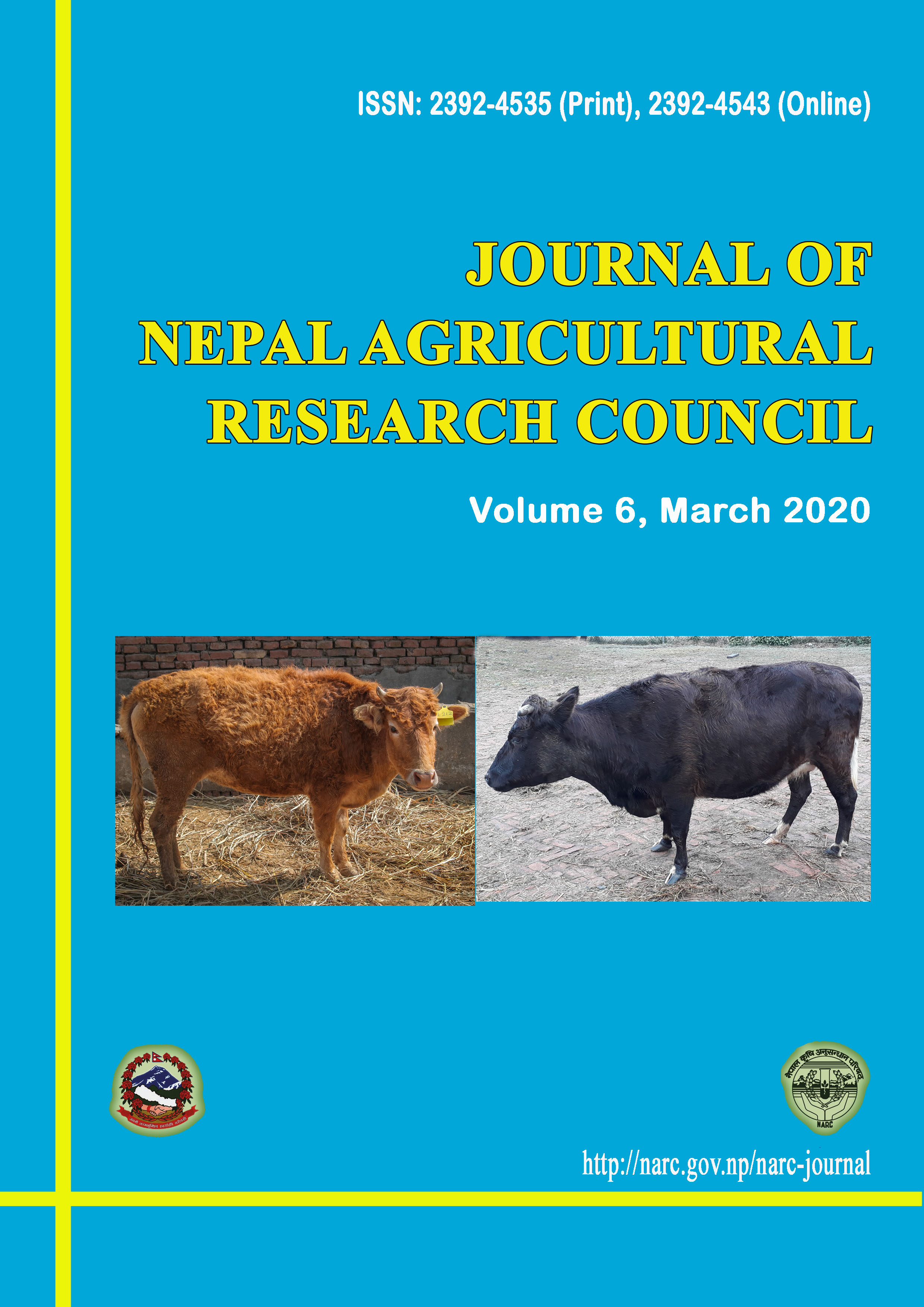Evaluation of Barley Genotypes against Spot Blotch Disease in Inner Tarai Region of Nepal
DOI:
https://doi.org/10.3126/jnarc.v6i0.28117Keywords:
Barley, Bipolaris sorokiniana, resistant genotypes, spot blotchAbstract
Spot blotch caused by Bipolaris sorokiniana (Sacc. in Sorok.) Shoem. is an important disease of barley (Hordeum vulgare L.). A total of 126 barley genotypes received from Hill Crops Research Program, Kabre, Dolakha having SoluUwa as a susceptible check and Bonus as a resistant check were evaluated as barley disease screening nursery (BDSN) under natural epiphytotic condition at National Maize Research Program, Rampur, Chitwan during winter seasons of 2017 and 2018. The nursery was planted in augmented design. The resistant and susceptible checks were repeated and planted after each 10 tested entries. The unit plot size was 2 rows of one meter length for each genotype planted continuously with 25cm row to row spacing. The seed rate was 100 kg/ha. The recommended fertilizer dose of 23:30:0 N:P2O5:K2O kg/ha was applied. The double digit scale (00 to 99) was used to measure overall foliar infection on the whole plant during flowering, soft dough and hard dough stages. Other agronomic practices were followed as per recommendation. Genotypes B86019-1K-3K-0K3, ACC 2087, ACC 2441, ACC GHv-06816, ACC 1597, ACC 1612, ACC 2059 and ACC 2032 were resistant against spot blotch disease. Similarly, 32 barley genotypes were moderately resistant and rest of the tested genotypes were susceptible to the disease. The selected resistant barley genotypes can be used in crossing program and/or promoted for further testing to develop spot blotch resistant varieties for inner Tarai region of Nepal.
Downloads
Downloads
Published
How to Cite
Issue
Section
License
This license enables reusers to distribute, remix, adapt, and build upon the material in any medium or format for noncommercial purposes only, and only so long as attribution is given to the creator.




